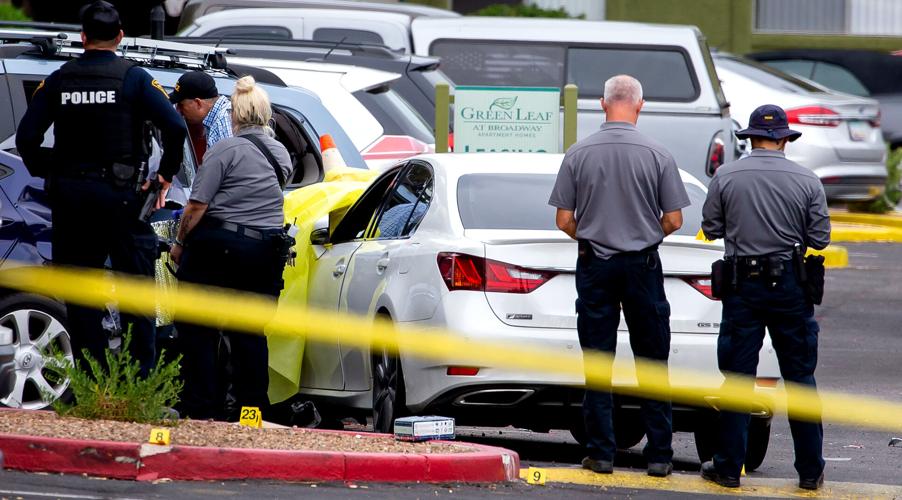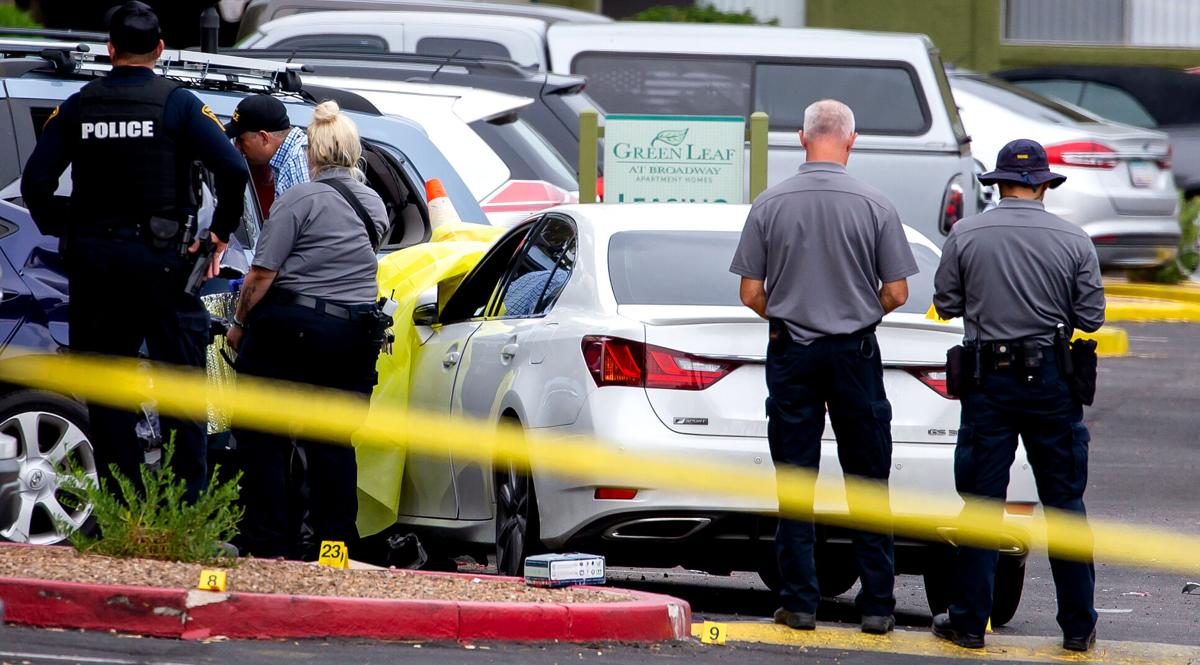At 1 a.m. on Nov. 30, Victoria Richards woke up to a knock at her front door from the Bisbee Police. They handed her a piece of paper with a detective’s name on it, telling her they had been asked to have her call them.
Richards was told that her brother was killed in a police shooting and did not survive.
“Sometimes I just feel paralyzed and like I’m going to wake up from this bad dream,” Richards said.
2021 was a record-breaking year for homicides in Tucson, resulting in a tough year for the community as well as those directly affected.
According to the Tucson Police Department, the city had 93 homicides last year. The former record was set in 2008 with 79 homicides.
In 2020, Tucson recorded 68 homicides, and 2019 had 49 homicides.
Pima County’s jurisdiction has seen a continuing decrease in homicides. According to the Sheriff’s Department, 2021 had 15 homicides, 2020 had 16 homicides and 2019 had 18 homicides.
This year alone, Tucson saw a deadly Amtrak shooting that resulted in the death of a DEA agent, road rage shootings, the July 18 attacks that left four dead including the gunman and most recently, the police shooting of Richard Lee Richards, a 61-year-old man in a motorized wheelchair accused of shoplifting.

A Tucson police officer approaches a man in a motorized wheelchair outside a Lowe’s Home Improvement store on West Valencia Road. The man in the wheelchair, Richard Lee Richards, 61, reportedly had flashed a knife and was shot dead.
Assistant Police Chief Kevin Hall said that while TPD can determine the number of homicides with complete certainty, the motives, victim and offender relationships with these incidents are becoming less and less clear, which makes solving the cases far more complex.
“What is perfectly clear, however, is that the homicide problem in Tucson is fueled in most cases by gun violence,” Hall said. “In 2021, 86% of the homicides were the result of gun violence.”
Hall also said it is clear that the homicides disproportionately impacted minority communities. According to Hall, in Tucson in 2021, 26% of the victims were Black, 53% were Latino and 2% were Native American.
Despite the high number of homicides, TPD continues to solve homicides at a far higher rate than the national average, Hall said. Eighty-two percent of 2021 homicides have been solved. Hall credits the collaboration between patrol-based tactical investigators and violent crime detectives for the successful case resolution.
“A healthy and robust partnership with the ATF (Bureau of Alcohol, Tobacco, Firearms and Explosives) combined with NIBIN (National Integrated Ballistic Information Network) technology is critical in solving firearm-involved homicides and connecting shooting cases across the region and state, potentially preventing future homicides by identifying offenders through the weapons they use,” Hall said. “This will continue to grow and evolve in 2022 and beyond.”
Finding support
When they were younger, Victoria Richards remembers growing up in her brother’s shadow, hanging onto his shirt tails. As they grew older, she helped him out and cared for him when he was badly injured in an accident.
After receiving the news of her brother’s death, Victoria Richards said the Bisbee Police came back to check on her the next day, along with receiving an outpouring of support from community members.
When video of the shooting was released, Victoria Richards said she had to scroll past all the videos quickly to avoid watching the graphic footage.
“I felt every single one of those shots,” she said.
While Richards said it has been extremely difficult and surreal, she has had some help from Homicide Survivors, Inc., a local nonprofit dedicated to helping families of murder victims.
Daniela Muñoz-Alvarez, a bilingual victim advocate, reached out to Victoria Richards and has been helping her cope.
“She’s been very helpful, and I just joined their virtual group the other night for the first time,” Richards said. “It’s really helpful to know that you’re not alone.”
With the record-breaking year in homicides, Richards encourages those going through similar situations to find others, saying reaching out and being gentle with yourself are the best ways to move on.
“Everybody grieves differently. Some days I think I’m fine, and then other days something will trigger me,” Richards said. “All I want to do is connect with all these other people that are going through what I’m going through.”
An investment in the community
To combat this issue in 2022, TPD will continue to implement a comprehensive and expansive gun violence reduction strategy, Hall said.
Hall said TPD has now implemented place-based strategies, such as Place Network Investigations, to identify hot spots of violent crime within the city, determine the root causes of the violence and working with the community and other city departments to remove the determinants of violent crime.
Hot spot policing, a strategy that analyzes crime data to determine where the violent crime is occurring in the city and allows commanders to deploy patrol officers to the areas where violent crime is most likely to occur, is another initiative that will be fully implemented in 2022, Hall said.
“Both initiatives will be carefully monitored with an eye toward equity,” Hall said. “They are not enforcement led, but have equal components of community engagement, education, problem-resolution and enforcement.”
Hall said that the city’s Community Safety and Wellness Program will be an active and integral partner with all the violent crime efforts that TPD engages in, and, as resources and funding become available, other components of the gun violence reduction program can be explored.
“What is key to all these initiatives is that gun violence is a complex social problem that the police alone will never be able to fix or prevent,” Hall said. “The intractable structural social issues associated with concentrated urban poverty have to be addressed by the entire community as a whole, not one entity within society. Prevention is possible, and absolutely necessary to stop the deaths of our young men, but effective prevention requires a whole community investment.”






